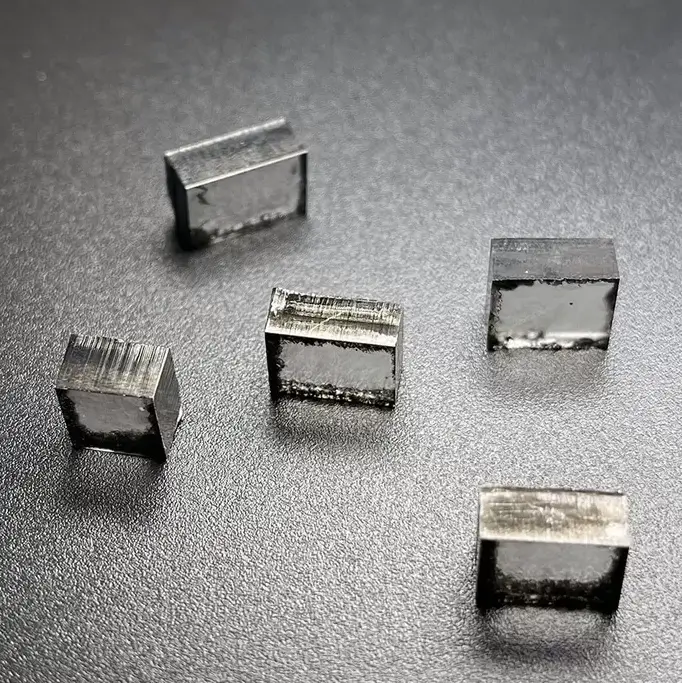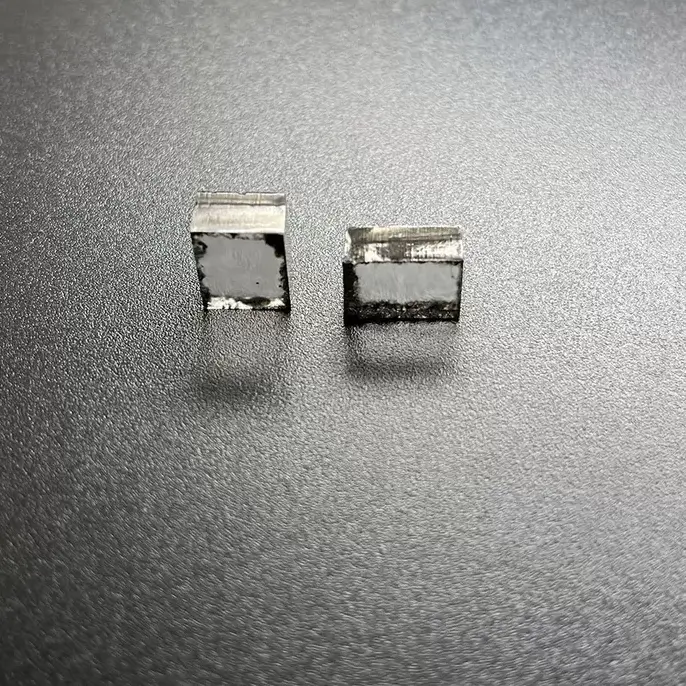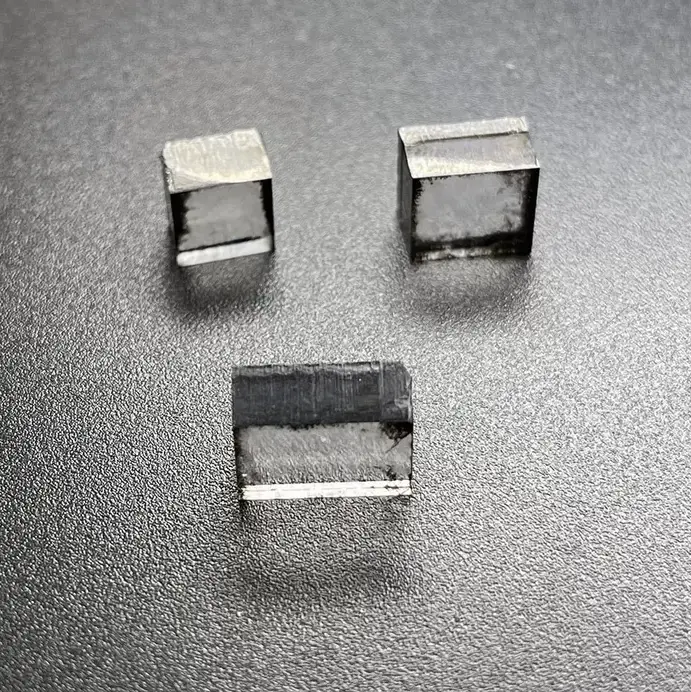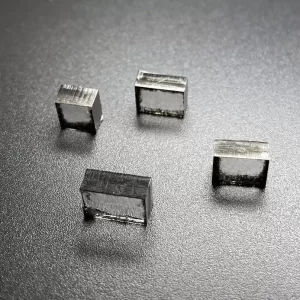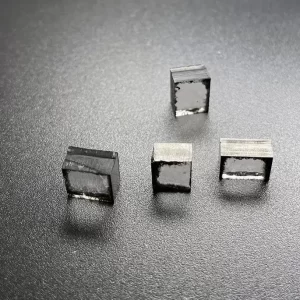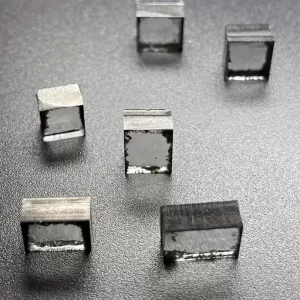Rectangular 7mm 9mm GH Color CVD Rough Raw Diamond For Ring
Rectangular Shape 7mm – 9mm GH Color Rough Raw Cvd Diamond For Synthetic Cvd Diamond Ring Making
Synthetic Cvd Diamond Description
The lab grown diamonds is made by using high technology to simulate the environment in which natural diamonds are formed in the earth’s crust.
Although synthetic diamonds are manufactured in factories, their chemical and physical properties are very close to natural diamonds.
In the 1950s, scientists made diamonds in the laboratory for the first time. However, the diamonds manufactured at that time were too small to be suitable for jewelry. Nowadays, more and more companies are engaged in synthetic diamond manufacturing business. Many countries and regions are manufacturing synthetic diamonds for jewelry and industrial purposes.
CVD and HPHT are two main methods to make lab diamonds nowadays.
The traditional diamond manufacturing method is called the high pressure/high temperature (HPHT) method. It uses a device to simulate the high pressure and high temperature conditions of natural diamonds, and uses carbon materials in the device to produce synthetic diamonds.
A relatively new method called chemical vapor deposition (CVD) is to inject carbon-containing gas into a vacuum chamber and deposit its crystals on synthetic diamond seeds. This method requires lower temperature and lower pressure than the high-pressure high-temperature method. Both methods are currently very popular diamond manufacturing methods. The initial equipment cost of using the chemical vapor precipitation method to manufacture diamonds is lower than that of the high-pressure and high-temperature method, but the diamonds manufactured using this method require subsequent processing to improve the color.
What is the Difference Between a Natural and a CVD Rough Raw Diamond For Ring?
What is the Difference Between a Natural and a CVD Rough Raw Diamond For Ring? A Natural diamond is mined from the earth while a CVD diamond is grown in a lab. Read on to discover more about the characteristics of each type and how they differ. In addition, find out about the price range for each and the differences between natural and lab-grown diamonds. Then, you’ll have a better idea of what to look for in a diamond ring.
Natural diamonds are mined in mines
While you may be wondering what goes into mining a diamond, you have probably already heard that natural diamonds are found in ancient Indian caves. Many cultures view diamonds as magical and thought that they held powers. For that reason, natural diamonds were given to royalty in China and Europe. Today, many people know how to mine a diamond. The process can be complicated, but the rewards are well worth it.
A natural diamond is made of highly organized carbon. This makes it the hardest substance in the universe. This process, however, requires extremely high temperatures and pressure to produce a diamond. Diamonds are formed deep within the earth’s mantle, where they undergo plate tectonic processes. Meteorites bring diamonds to the surface by entering the atmosphere, but these meteorites do not develop mining sites.
After the ore is collected, it is subjected to a variety of processes. The first step is to combine the ore with a solution of ferrosilicon and water to determine its relative density. The next step is to send the ore through a secondary crusher (also called a roll-crusher) to separate the diamond-bearing material from other materials. If the diamonds are less than 1.5mm in size, they are discarded.
Once a diamond reaches the surface, it is referred to as alluvial. The diamonds were originally carried down the river bed by nature and were then carried to the surface by rivers. Mining this type of diamond involves a process called industrial alluvial. This method involves constructing a giant wall in a riverbed to collect the water and transport the gravel to a processing facility.
Laboratory grown diamonds are mined in labs
Natural diamonds are created by extreme heat and pressure deep within the earth. When they reach the surface, they are mined and polished. But man-made diamonds are created in a laboratory and aren’t mined at all. Although they may look similar, they are actually different from natural diamonds in some ways. A natural diamond is created through geological processes that take millions of years to complete. A lab-grown diamond is created in controlled laboratory conditions and can be finished in a few months.
A lab-grown diamond’s price is similar to that of a naturally mined one. However, it cannot be sold for more than its retail value. Also, it does not increase in value with inflation. That means it’s more expensive than its mined counterpart. But there are some pros and cons to lab-grown diamonds. They can be made in a variety of shapes, sizes, and clarity levels.
A lab-grown diamond’s color and clarity is often the same as a natural diamond. It has the same crystalline structure and chemical makeup as a mined diamond. It also has the same physical and optical properties. It will sparkle as brilliantly as a mined diamond of the same quality. In addition to being transparent, lab-grown diamonds can have slight variations in color and a range of inclusions. They are graded according to the same standards as mined diamonds.
One of the pros of CVD is that it’s much faster than natural diamonds, but it doesn’t sacrifice the quality of the stone. CVD diamonds are more accessible because their manufacturing process can be controlled, and the process is quicker than the natural growing process. Another benefit is that diamonds made in labs retain the same brilliance as natural ones. They can also be made in other ways, too, including diamond studs.
Characteristics of CVD diamonds
CVD process can produce diamonds with the desired shape and size. This process has several advantages over other methods. Its high-temperature process is less prone to chemical or physical defects than other conventional diamond-making processes. Additionally, CVD produces diamonds that are more durable. These benefits make it an ideal material for jewelry purposes. This article describes the basic CVD process and its key characteristics.
CVD is a new technique for growing diamonds. This technique involves depositing pure carbon onto a substrate. The process involves heating a vacuum chamber filled with carbon-rich gases. The high temperatures cause a gas called plasma to form. The carbon pieces then layer onto the diamond seed and grow it. The process yields Type IIA diamonds, which are rare among naturally occurring diamonds. In addition, CVD diamonds lack boron and nitrogen impurities. Lastly, CVD diamonds are not magnetic.
In order to make CVD diamonds, an atom of hydrogen is first converted into an atomic form. This can be achieved through an intense plasma, a hot filament, or by using another material. In addition, high-temperature hydrogen will selectively etch the surface of a graphite substrate. Hydrogen also breaks double bonds, which makes CVD diamonds unique. During the process, diamond seed must be a small piece of diamond, so that the hydrogen can effectively bond with it.
Another feature of CVD diamonds is that they are created in a laboratory. This method requires high-energy UV radiation to create the diamond’s crystal structure. As a result, the diamonds have similar optical and physical characteristics to natural diamonds. But the difference lies in the formation process. Compared to natural diamonds, CVD diamonds have a much less visible inclusion pattern. Therefore, the CVD diamonds have an advantage in cutting and polishing, making them an excellent choice for jewelry.
Cost of CVD diamonds
The cost of CVD rough raw diamonds for a ring can be anywhere between $10 and $4,000. Prices vary based on stone structure, cleavages, macles, and flats. However, it is important to note that the higher the quality of the rough diamond, the higher the price will be. For example, a round diamond will cost much more than a square or pear diamond, which would cost half as much.
The diamonds are graded on a scale of D to Z, with D being colorless and Z being a diamond with a yellow or brown tint. The higher the color grade, the more expensive the diamond. However, this difference is not always noticeable. A diamond in the G to J range will have virtually no color, but cost less than a diamond in the D, E, or F grades.
While the quality of CVD-grown diamonds for ring production is very similar to that of natural gemstones, there are significant differences in cost. In addition to the price difference, the stones must undergo additional treatments, such as irradiation and heat treatments. Currently, most CVD-grown diamonds are one carat or less. However, as technology improves, larger stones are emerging in the market.
A raw diamond does not twinkle in the traditional sense, but they have a beautiful shimmer and catch the light at various angles. They are perfect for a low-key bride, or those who want a unique ring. In addition to being cheaper, raw diamonds are used by many designers to create unique pieces of jewelry. You can find several raw diamond ring designs on Etsy. So what are you waiting for? Get started shopping for your ring today!
Environmental impact of CVD diamonds
The FTC warns consumers against buying’sustainably sourced’ diamond rings. However, lab-grown diamonds are often made using the same carbon crystal structure and other properties as natural diamonds. The Federal Trade Commission has warned diamond companies that falsely claim they’re green when they’re not. One company that’s trying to make its production processes more environmentally friendly is Diamond Foundry, run by Leonardo DiCaprio. The company has a carbon neutral certification and uses renewable energy to manufacture the diamonds.
The process of mining diamonds for jewelry uses 127 tons of earth and billions of gallons of fresh water. In addition, this method causes deforestation, flooding, and other devastating effects on the ecosystem. In addition, diamond mining is accompanied by many human costs, including exploitation, neglect, and unsafe business practices. Unlike traditional diamond mining, the manufacturing of lab-grown diamonds does not use dangerous and unethical labor practices, and its production process requires minimal fossil fuel.
When it comes to environmental impact, lab-grown diamonds are the greenest choice for the average diamond buyer. The process requires less energy than mined diamonds, resulting in minimal impact on the surrounding environment. Additionally, man-made diamonds are more affordable than their natural counterparts. There’s no reason not to buy man-made diamonds! So, which diamond is better for you? Consider all the pros and cons and decide for yourself.
The environmental impact of CVD rough raw diamonds for jewelry is less than half that of mined ones. Diamond mining, along with its associated labor practices, has led to the destruction of habitats across Canada. For example, one Canadian diamond mine killed over 18,000 fish. Some diamond mines have even been blamed for placing endangered tigers under pressure. Consequently, mined diamonds are also more environmentally damaging, making them more expensive.
Rectangular 7mm 9mm GH Color CVD Rough Raw Diamond For Ring
